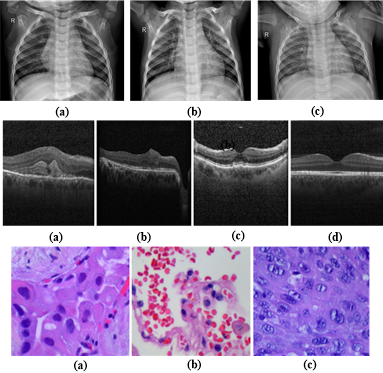Disease Classification and Impact of Pretrained Deep Convolution Neural Networks on Diverse Medical Imaging Datasets across Imaging Modalities

0

Sign in to get full access
Overview
- This paper explores the performance of pre-trained deep convolutional neural networks (CNNs) on diverse medical imaging datasets across different modalities.
- The researchers assess the impact of pre-training on classification accuracy and evaluate the transferability of learned features.
- They compare the performance of various pre-trained CNN models, including ResNet, InceptionV3, and DenseNet, on several medical imaging datasets.
Plain English Explanation
The researchers in this study wanted to understand how well pre-trained deep learning models, which have been trained on large general image datasets, can be used for medical image classification tasks. They tested several popular pre-trained CNN models, like ResNet, InceptionV3, and DenseNet, on a variety of medical imaging datasets covering different modalities like X-rays, CT scans, and MRI.
The goal was to see how well these pre-trained models could classify diseases and other medical conditions in the medical images, without having to train the models from scratch. This is called transfer learning, where the knowledge gained by a model on one task is leveraged to improve performance on a related task. The researchers wanted to evaluate the effectiveness of this approach for medical imaging applications.
Technical Explanation
The researchers conducted experiments to evaluate the performance of several pre-trained CNN models, including ResNet, InceptionV3, and DenseNet, on a diverse set of medical imaging datasets. They fine-tuned the pre-trained models on each dataset and compared the classification accuracy to models trained from scratch.
The medical imaging datasets covered various modalities such as X-ray, CT, and MRI, and included tasks like disease classification, organ segmentation, and abnormality detection. The researchers analyzed the impact of pre-training on the models' performance and the transferability of the learned features across different medical imaging domains.
The results showed that the pre-trained models generally outperformed models trained from scratch, demonstrating the effectiveness of transfer learning for medical image analysis tasks. The researchers also found that the choice of pre-trained model and the degree of fine-tuning can have a significant impact on the final performance.
Critical Analysis
The paper provides a comprehensive evaluation of the impact of pre-trained CNN models on medical image classification tasks. However, the authors acknowledge several limitations:
- The study only considered a limited number of pre-trained models and medical imaging datasets. Expanding the analysis to a wider range of models and datasets could provide more insights.
- The authors did not explore the effects of dataset size and class imbalance on the transferability of pre-trained features. These factors can significantly impact the performance of transfer learning approaches.
- The paper does not delve into the interpretability and explainability of the pre-trained models' decisions, which is an important consideration for medical applications.
Further research could investigate the performance of newer model architectures, such as vision transformers, and explore more advanced fine-tuning strategies to optimize the transfer of learned features.
Conclusion
This study demonstrates the potential of leveraging pre-trained deep learning models for medical image analysis tasks. The results suggest that transfer learning can be a powerful approach to improve the performance of disease classification and other medical imaging applications, without the need for extensive training data and computational resources.
The findings have important implications for the development of practical and efficient AI-powered medical imaging tools, which could potentially enhance disease diagnosis and treatment planning. However, further research is needed to fully understand the limitations and best practices for applying transfer learning in the medical domain.
This summary was produced with help from an AI and may contain inaccuracies - check out the links to read the original source documents!